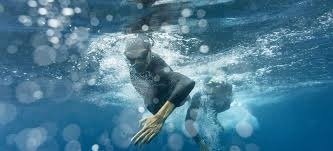Swimming in open water can be both invigorating and demanding. From fluctuating water temperatures to unpredictable currents, swimmers face challenges that require more than just skill and stamina. This is where swimming wetsuits come into play. Designed with advanced materials and hydrodynamic features, wetsuits offer a competitive edge by improving buoyancy and extending endurance. Whether you are a recreational swimmer or training for a triathlon, understanding how wetsuits enhance performance can make a noticeable difference in your time in the water.
The Science of Buoyancy
Buoyancy is the upward force that keeps swimmers afloat. The neoprene used in most modern swimming wetsuits contains tiny air bubbles that increase a swimmer’s natural buoyancy. By lifting the body higher in the water, wetsuits reduce drag and resistance. This elevated position minimises energy expenditure because less effort is needed to stay afloat. For endurance athletes, this energy conservation allows them to swim longer distances without fatigue setting in as quickly.
For beginner swimmers, the added buoyancy provides confidence and stability, enabling them to focus on improving technique instead of struggling to stay above water. It essentially acts as a supportive tool, bridging the gap between raw ability and efficient movement.
Enhanced Body Position and Technique
A higher body position in the water translates to smoother and faster swimming. Many swimmers unconsciously sink at the hips and legs, creating extra resistance that slows them down. Swimming wetsuits correct this imbalance by lifting the lower body, encouraging a streamlined form. This improved body alignment reduces drag and helps swimmers glide more efficiently.
Better body positioning also supports proper stroke mechanics. With less resistance to fight against, swimmers can maintain steady strokes, conserve oxygen, and sustain a stronger rhythm. Over long distances, this refined technique contributes significantly to overall endurance.
Thermal Protection for Longer Swims
Cold water can sap a swimmer’s energy, quickly leading to muscle fatigue and reduced performance. Wetsuits are engineered to trap a thin layer of water between the neoprene and the skin, which the body warms naturally. This thermal barrier helps regulate body temperature, keeping swimmers comfortable in cooler environments.
By preventing hypothermia and reducing the body’s struggle to maintain core warmth, wetsuits ensure that energy is channelled into forward motion rather than temperature regulation. This extended comfort allows for longer training sessions and improved endurance in races or recreational swims.
Energy Conservation and Endurance
One of the most notable benefits of wearing a wetsuit is the way it helps conserve energy. By reducing drag, improving buoyancy, and providing thermal insulation, wetsuits lower the overall physical demand placed on swimmers. The result is a more efficient swim, where each stroke covers more distance with less exertion.
This efficiency is especially important in endurance events such as triathlons. Athletes need to conserve energy for cycling and running stages, so the wetsuit becomes more than just swimwear—it becomes a performance-enhancing tool. Even outside of competition, swimmers benefit from reduced fatigue, enabling them to push their limits and build stamina over time.
Confidence in Open Water
Endurance isn’t only about physical ability. Mental strength plays an equally crucial role. Wearing a wetsuit often gives swimmers the confidence to tackle open water challenges that might otherwise feel daunting. Knowing that you have additional buoyancy, warmth, and streamlined support fosters a positive mindset, which can be the deciding factor in maintaining endurance over long distances.
Conclusion
Wetsuits have revolutionised the swimming experience by combining comfort, safety, and performance. They work on multiple levels: improving buoyancy, enhancing body position, conserving energy, and providing thermal protection. For beginners, they act as a supportive aid, while for experienced swimmers and triathletes, they serve as an essential piece of gear that can shave seconds off times and make endurance goals more attainable.
Investing in high-quality swimming wetsuits is not just about having the right equipment—it’s about giving yourself the advantage to swim farther, faster, and with greater confidence.
 Online Clock
Online Clock